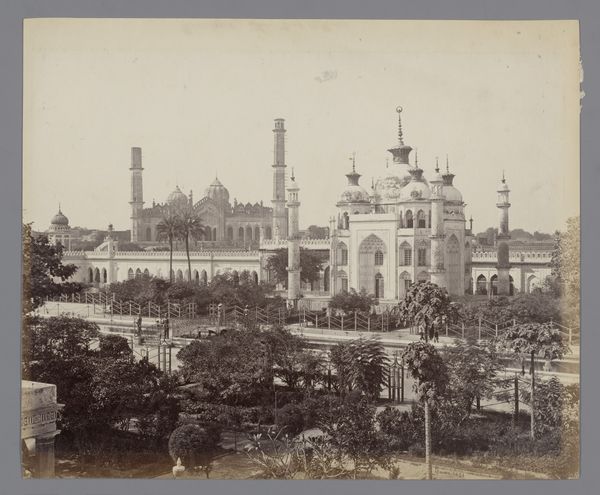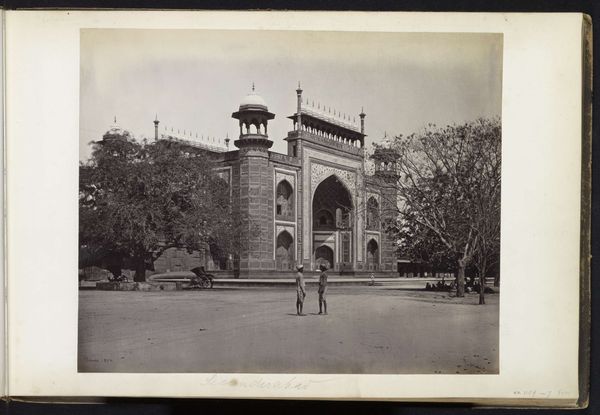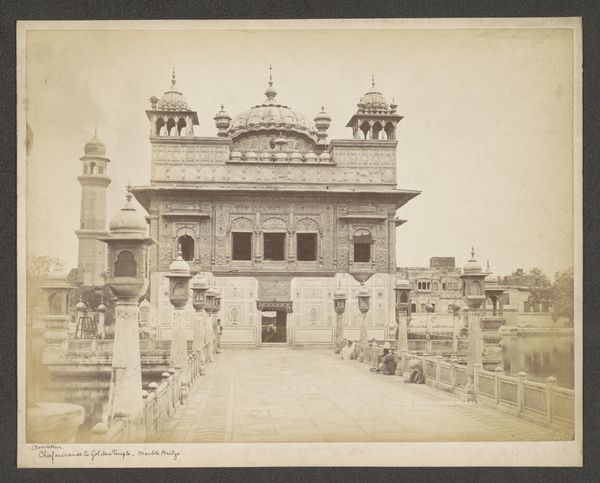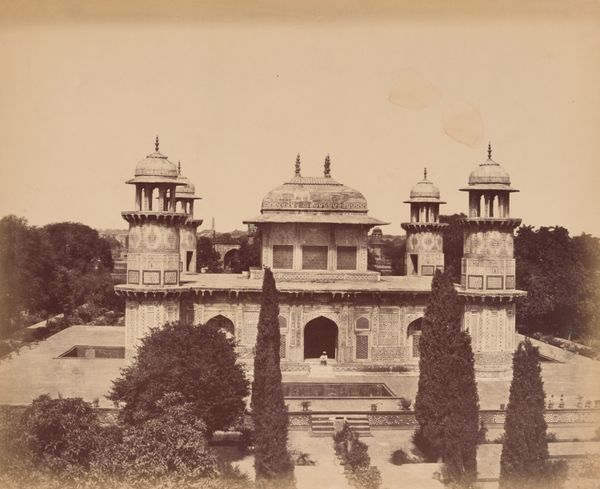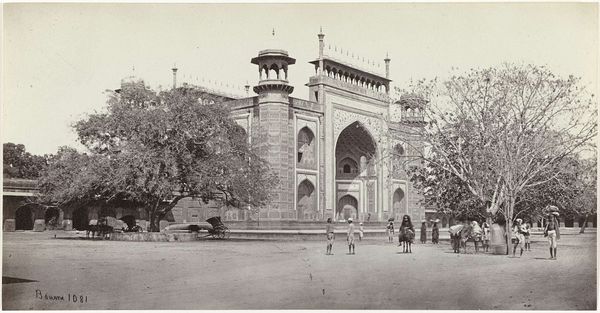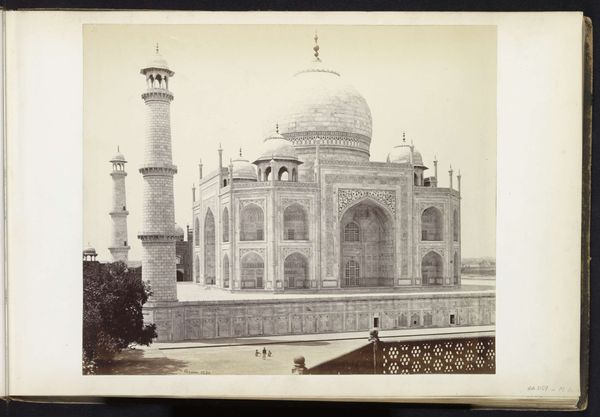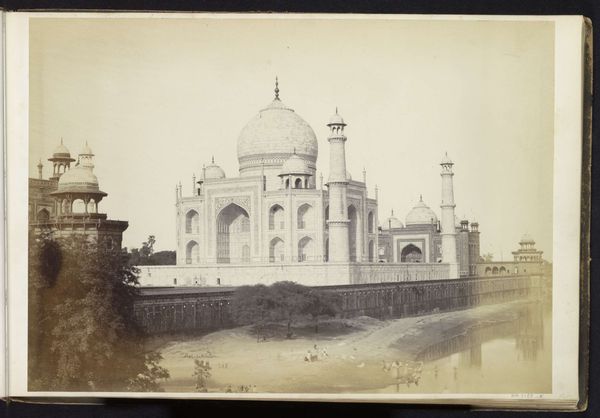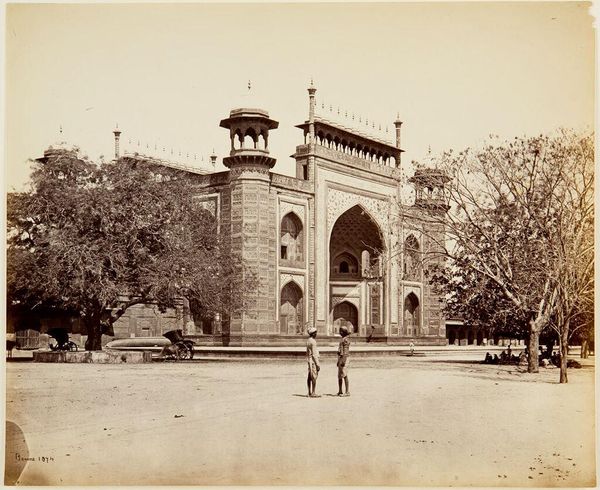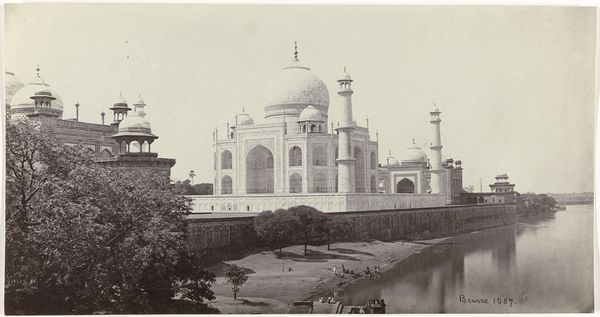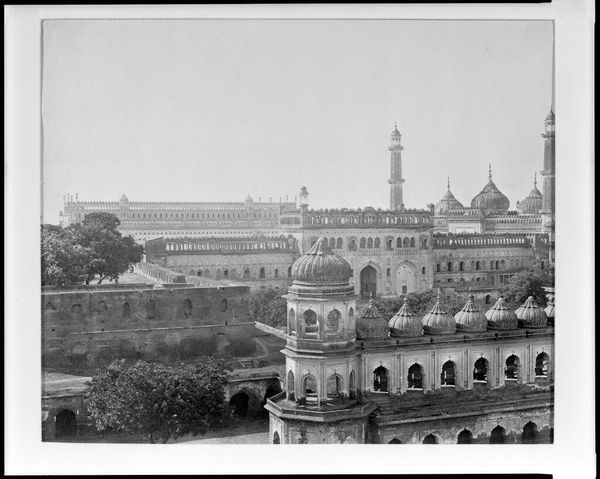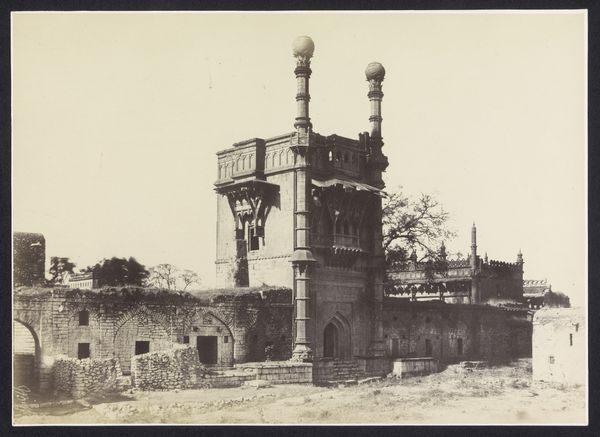
photography, site-specific, albumen-print, architecture
#
landscape
#
photography
#
orientalism
#
site-specific
#
19th century
#
islamic-art
#
albumen-print
#
architecture
Dimensions: height 202 mm, width 298 mm, height 225 mm, width 320 mm
Copyright: Rijks Museum: Open Domain
Editor: So, this albumen print, taken by Samuel Bourne between 1863 and 1866, captures the Mausoleum van Safdarjung in New Delhi. It's really stunning, there's something so imposing about the architecture. What stands out to you when you look at it? Curator: Imposing is a great word. The photograph certainly speaks to that, but I see a collision, really. Bourne, a British photographer, documenting a distinctly Mughal architectural achievement. Think of the gaze he's casting: one of colonial documentation, perhaps fascination, maybe even appropriation. I mean, what does it mean to frame this monument through a Western lens? Editor: That's fascinating! I hadn't really considered that perspective. Do you think it affects how we, as contemporary viewers, interpret it now? Curator: I think it absolutely does! Photography, especially then, was far from objective. Bourne's choices – his composition, the light he captured – all narrate a specific story. This image might reinforce a romanticized view of the "Orient," filtered through the photographer's cultural background. But also, remember, he was an incredible photographer. What do you feel looking at that sky? Editor: It feels kind of hazy, like a memory fading at the edges. Maybe he’s going for a kind of…exotic timelessness? Curator: Precisely! See, you're on your way to developing your eye. So it might be important to also investigate why he chooses those aesthetics, beyond face value. Perhaps, a commercial one, but perhaps not… I wonder what drove him there. It leaves a haunting impression. Editor: It does. Thinking about Bourne's perspective really shifts how I see this image. I guess it highlights the importance of thinking about the photographer and their intentions. Curator: Absolutely. It encourages us to ask questions, dig deeper, and see beyond the immediate beauty. It has something poetic too, don’t you feel it?
Comments
No comments
Be the first to comment and join the conversation on the ultimate creative platform.
